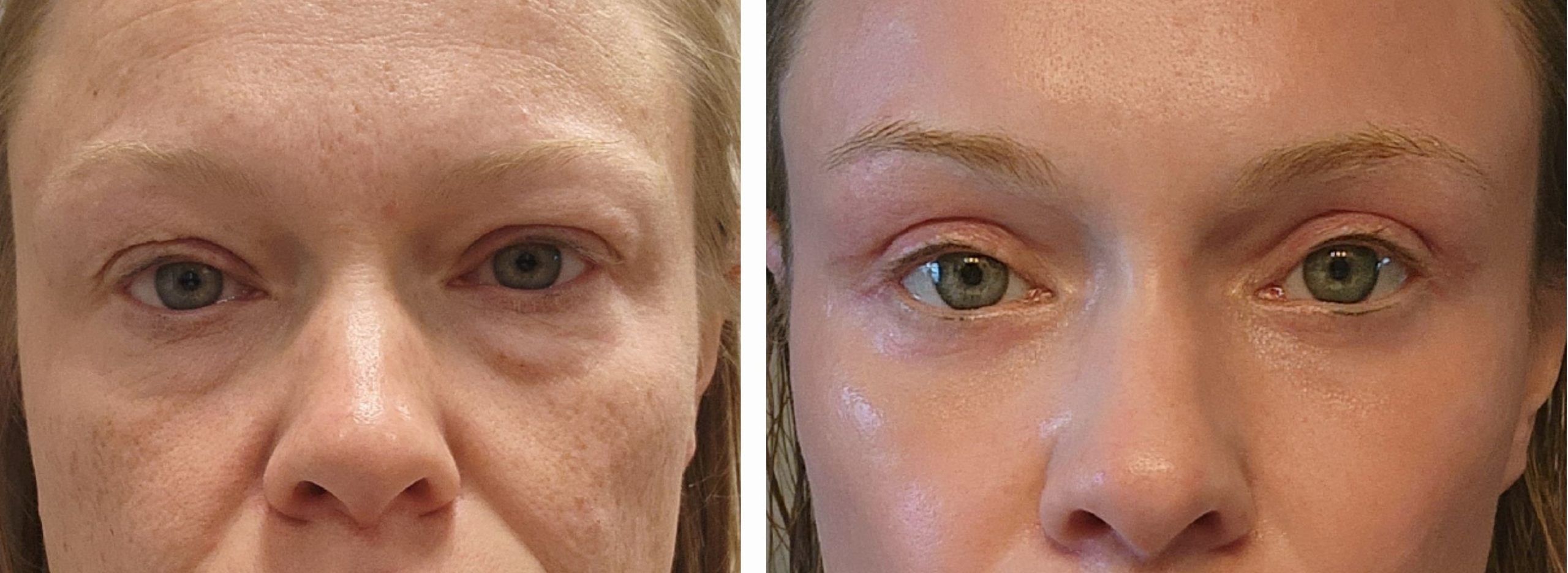There’s a difference between having bags under your eyes and having malar mounds, Festoon or Festoons. Festoons and malar mounds differ from under-eye bags, and you may have both. It’s important to understand how they differ from under-eye bags.
People pursue cosmetic surgery for many straightforward reasons: refining the nose, smoothing wrinkles, and correcting drooping eyelids.
If you’re looking into issues under your eyes and have always thought of them as “bags,” you might encounter unfamiliar terms—festoons and malar mounds—leaving you unsure of what you’re actually dealing with.


Book Your Complimentary Virtual Appointment
These photos of the same patient before and after under-eye bag surgery (but before Festoon surgery) clearly show the difference between under-eye bags and Festoons (malar mounds).
What Causes Under Eye Bags?
Under-eye bags are a function of aging, and most people will develop them. They are a result of fat that helps support the eyes moving into the lower eyelids, causing them to appear puffy. Through the years, fat in different areas of our face will grow, and in other areas it will atrophy. At the same time some of the muscles surrounding our eyes weaken. All of those factors, along with genetics, combine to create under-eye bags.
Unlike under-eye bags, festoons form on the cheek, just below and often next to under-eye bags.
Another difference between the two is in how they feel: When you touch under-eye bags, they have a firm texture and can’t be moved. Malar mounds are squishy and can be slid from side to side.
Why Festoons and Malar Mounds Develop and What Makes Them Unique
What’s most important to understand is that festoons represent damage to the skin combined with underlying contracting muscle forces. These two factors together create a cascading drape of excess skin that droops down from under the lower eye rim and over the mound of soft tissue that forms. Festoons can range in size from subtle to extremely obvious, and their size and appearance can be exacerbated by chronic inflammation, age, and fluid retention.
Unfortunately, sometimes patients have fillers like Juvederm or Voluma injected underneath their festoons in hopes that the filler will smooth the appearance of the bulges.
But Adding Filler Makes The Problem Worse
Because the filler material seeks water, it can be attracted to the swelling that’s already there, leaving the Festoons looking worse.
Undergoing lower-lid blepharoplasty will eliminate under-eye bags but will not remove Festoons or malar mounds. And, often, a lower blepharoplasty will make Festoons worse. Festoons require a different procedure to restore a smooth contour all the way from the lower eyelid to the cheek.
Understanding the difference between festoons, malar mounds, and under-eye bags can help you discuss your goals with confidence. However, the best way to identify your condition and treatment options is to make an appointment.
Whether through a telehealth visit or in person, Dr Scheiner will be able to identify the exact procedure or procedures to return your face to the way it looked years ago.



